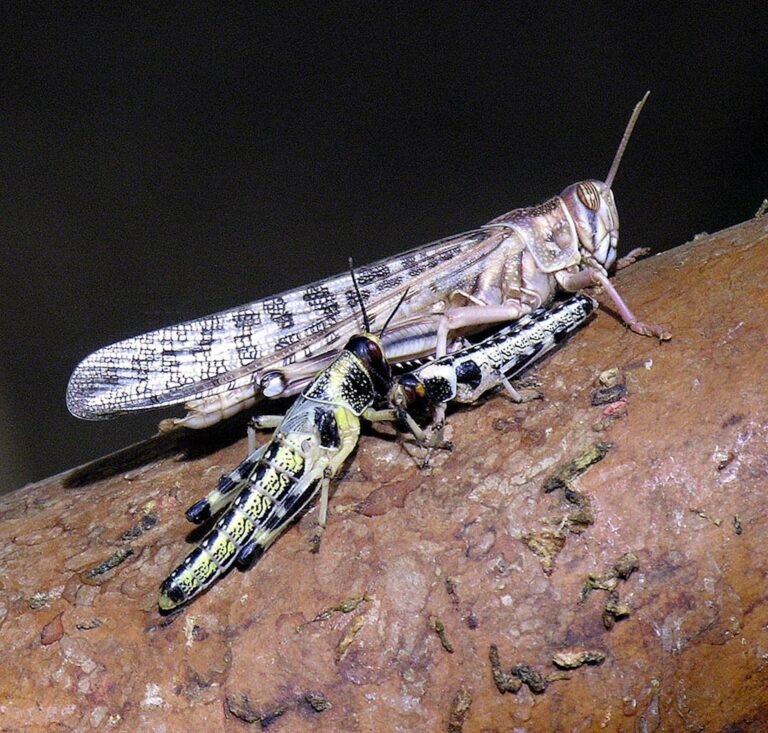When a caterpillar hatches from its egg, it spends the first few weeks of its life eating as much as it physically can. Then, it hangs itself upside down from a leaf or stem and sheds its outer skin to reveal its chrysalis. Inside, the caterpillar’s body breaks down, and specialized cells called imaginal discs begin to form the framework of the butterfly that will emerge. Within weeks, it will be ready to mate and start the process all over again.
The process of metamorphosis is so strange, it almost seems like science fiction. So how did such a peculiar life cycle evolve in the first place?
But according to James Truman, a biologist and professor emeritus at the University of Washington, something changed about 400 million years ago. Small genetic mutations caused the adult and juvenile phases of insects to look different — a phenomenon called incomplete metamorphosis. Rather than hatching as tiny versions of their adult selves, insects that undergo incomplete metamorphosis — called hemimetabolous insects — start their lives in what’s called the nymph phase.
Nymphs still roughly resemble their adult relatives, but they also have little pads where wings will grow. Each time the nymph molts, the wing pads develop further, until their final molt reveals functional adult wings. Those wings are what made incomplete metamorphosis such a big evolutionary step forward for insects — wings are so delicate that it would be difficult to hatch with fully functional wings, so it was easier for wings to develop with the insects throughout their lives.
After roughly another 50 million years, Truman said, more genetic mutations changed the early life stages of insects even further. These genetic shifts created holometabolous insects, which are insects that undergo complete metamorphosis. Rather than hatching out of their eggs as nymphs, these insects started to emerge as larvae — worm-like creatures that look nothing like their parents.
“The identity of the parents is [in] no way reflected in the identity of the young. There’s just no resemblance at all,” Truman told Live Science. “The [Latin] term for ‘larva’ means ‘mask,’ and indeed, the larval stage masks the adult stage.”

Evolutionary benefits
Today, there are about 5.5 million insect species on Earth, and more than 80% of them undergo complete metamorphosis. Metamorphosis has likely been such a success because it provides insects with many evolutionary advantages, the first of which was flight. Hemimetabolous insects were the first animals to develop functional wings, and they took to the skies far before any vertebrates did.
“For 100 million years, the insects had the air as their playground,” Truman said. “It’s this ability that really allowed insects to take over.”
Complete metamorphosis has even more advantages. Because the larval and adult life stages are so different, juveniles and adults can specialize in different things; generally, larvae spend most of their time eating, whereas adult insects are more concerned with reproducing. In some cases, the adults of some species, such as luna moths (Actias luna), don’t even have functional mouths; after metamorphosis, they spend the rest of their short lives finding a mate and never eat again.
Metamorphosis also brings benefits related to resource competition, Truman said, because adults and larvae can eat entirely different diets. In many species, larvae often feed on short-lasting resources, such as carcasses and worms, whereas adults feed on longer-lasting resources, such as nectar. This means the larvae and young aren’t competing for the same food, so greater numbers of each age group can survive.

While the evolutionary advantages of complete metamorphosis are clear, the details of how this complex process first evolved remain murky.
“There are two main schools,” Xavier Bellés Ros, an ad honorem researcher at the Spanish National Research Council, told Live Science in an email.
One idea, supported by Bellés Ros, proposes that complete metamorphosis evolved as the nymph stage split into the larval and pupal phases. The opposing camp, supported by researchers including Truman, argues that the larval stage originated from an embryonic phase known as the pronymph, the brief phase when an insect first begins to emerge from its egg.
Scientists do know some of the key genes that control the larval, pupal and adult stages of insects with complete metamorphosis. “Each stage seems to be controlled by a master regulatory gene,” Truman said. What remains unclear is how those same genes function in simpler insects that develop without such drastic transformations.
Still, researchers say the enduring mysteries of metamorphosis are part of its appeal.
“After 30 years of working with it (and I’m still working), I’ve only unraveled a few mysteries,” Bellés Ros said. “There’s still a lot of work to be done, work that should prove fascinating for future generations of entomologists.”


